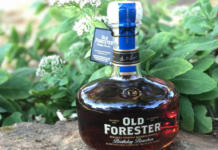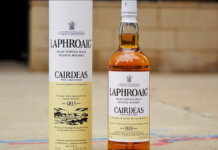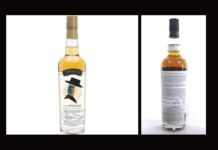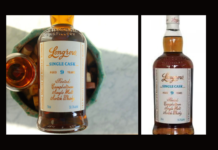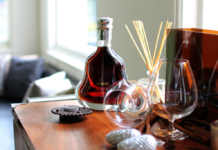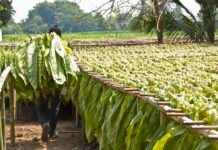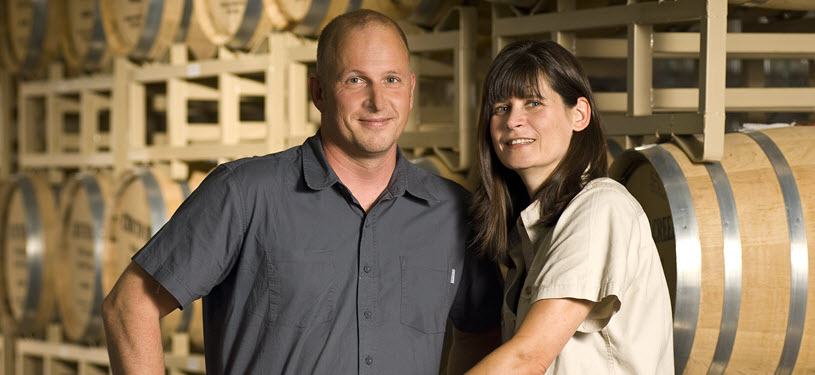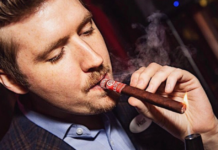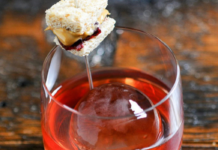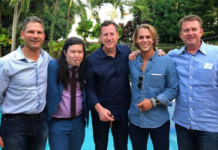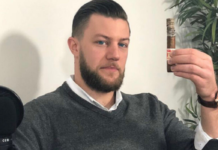Catoctin Creek® was founded by Becky and Scott Harris in 2009 as the first legal distillery in Loudoun County since before Prohibition. We are located in Purcellville, Virginia, in the heart of the Loudoun Valley. Virginia is the birthplace of American whiskey, and at Catoctin Creek, we faithfully dedicate ourselves to that tradition, producing Virginia’s most awarded whisky today—Roundstone Rye!
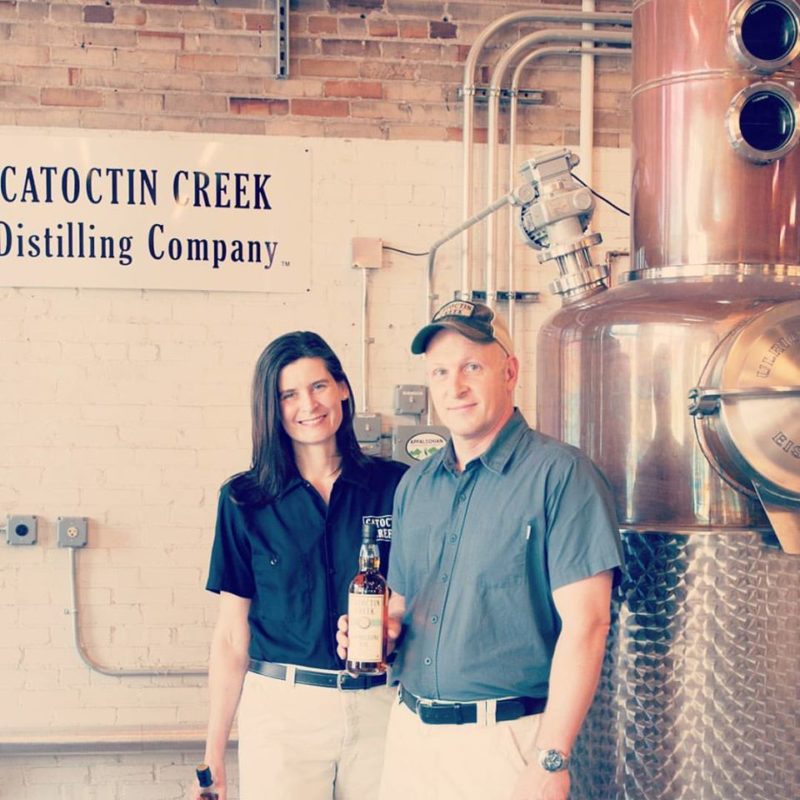 Scott, tell us about yourself.
Scott, tell us about yourself.
SH: I am a forty-plus year old ex software engineer. When I graduated from Georgia Tech, I went to work for the telecommunications and later the government contracting sectors. Trained in software development, I spent twenty years building systems like cable-modems and fiber-optic systems we use today for broadband. Later, I worked on systems for the U.S. Navy. As I like to say, twenty years of computers taught me a great love of drinking. It was my mid-life crisis which created a restlessness in me that sent me looking for my next career… distilling.
It’s not about how we get there Scott, but the journey I would imagine. What is the history of Catoctin Creek? What was the vision for the distillery?
SH: My wife, Becky–a chemical engineer–and I started Catoctin Creek in 2009. From the beginning, Becky was the chief distiller and head of production, and I was the business manager. We started it because we shared a love of hand-crafted whisky and for our native state, Virginia. The history of whisky starts in Virginia, with rye whisky, and it is that history that we seek to re-create and educate people on, with our Roundstone Rye… one bottle at a time.
What is your role and what does your day look like from the moment you step into your office?
SH: I am the general manager, so I am responsible for strategy, planning and execution of our business. I spend my day working our larger business plans, and motivating my employees to reach their own fullest potentials. It is a team sport… no one person can do it all.
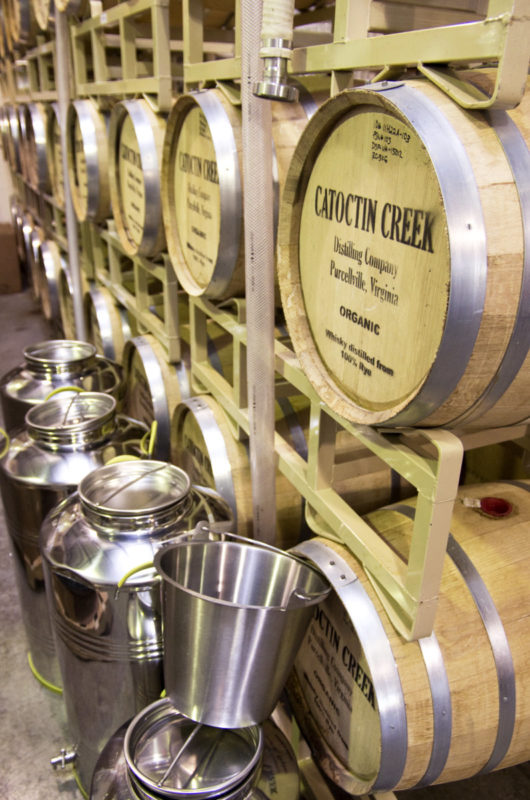 (Photo Credit to: Sarah Hauser, Virginia Tourism Corporation)
(Photo Credit to: Sarah Hauser, Virginia Tourism Corporation)
For other people looking to head into this industry, what challenges and learning experiences can you share with us?
SH: You must be prepared. People want to get into this business because it has romance and seems cool. But it is a hard blue-collar job. Be ready to WORK. It is also capital intensive. Lots of money must be put down on equipment, grain, bottle and beverages, and lately, the competition has become fierce. Add to that the challenges of distribution and the federal and state bureaucracies, and it is one of the most challenging things I’ve ever done in my life. A good business plan is a must before launching into this industry.
That is some great advice, thank you for letting us know Scott! With that said, what would you say has been your proudest moment?
SH: My proudest moment was standing before my Chamber of Commerce, with my wife looking on, receiving the Entrepreneur of the Year award. It was just wonderful to have a moment to reflect on what we’d accomplished together and pinch ourselves that we had done what we love–together!
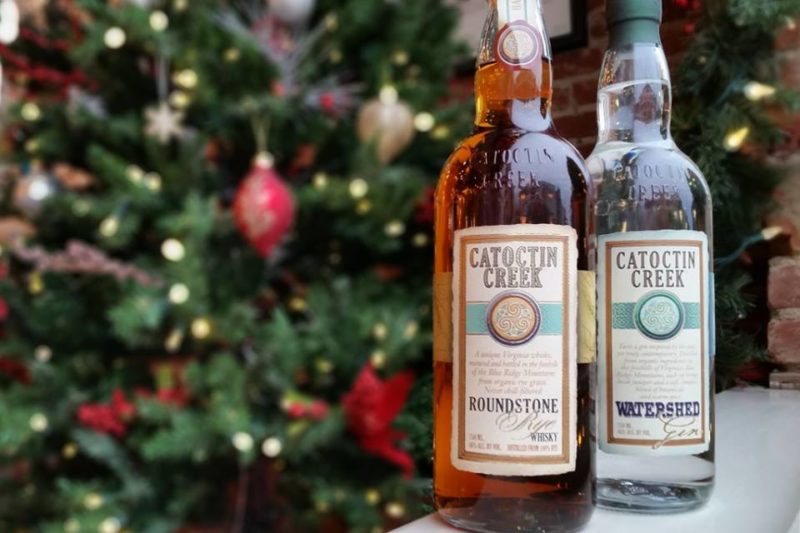 Okay, Scott, lets get to the fun part. What types of Whiskey is the distillery currently producing. Are the ingredients for the whiskey sourced locally?
Okay, Scott, lets get to the fun part. What types of Whiskey is the distillery currently producing. Are the ingredients for the whiskey sourced locally?
SH: Our flagship product is Roundstone Rye, and this is sourced from farms less than 2 hours from the distillery. We have been happy to be increasing the content of our local rye. When we first started, very little local rye was available, and now we have more and more available to us. We’ve been able to grow our business and grow agriculture in the region, and that is a very good thing.
Can you walk us briefly through the process from collecting the grain to bottling the whiskey.
SH: The production day begins with the making of the mash. 700 lbs of organic rye are added to a mash tank of steeping hot water. We begin cooking that grain to break down the starches and produce the sugars needed for fermentation. After about 6 hours, we have a mash that is ready to pump into the fermenters, with the addition of our yeast. Then, they will sit for a week or two, while the yeast ferments the sugar into alcohol. Once the mash is fully fermented, we will transfer it into the pot still, and we then distill off the alcohol.
That alcohol then is placed into charred new Minnesota white oak barrels, and aged for from 2-4 years, depending on many factors like the weather, the porosity of the wood, etc. Once the whisky is ready (our taste buds tell us when), we dump the barrels to tanks and add water to bring it to proof. We then bottle it all. Every step in our whisky process is done by us here in our Purcellville facility. We never, ever bottle someone else’s whisky. Each drop is made by us, right here, and we feel that this is really important! What we call #truecraft
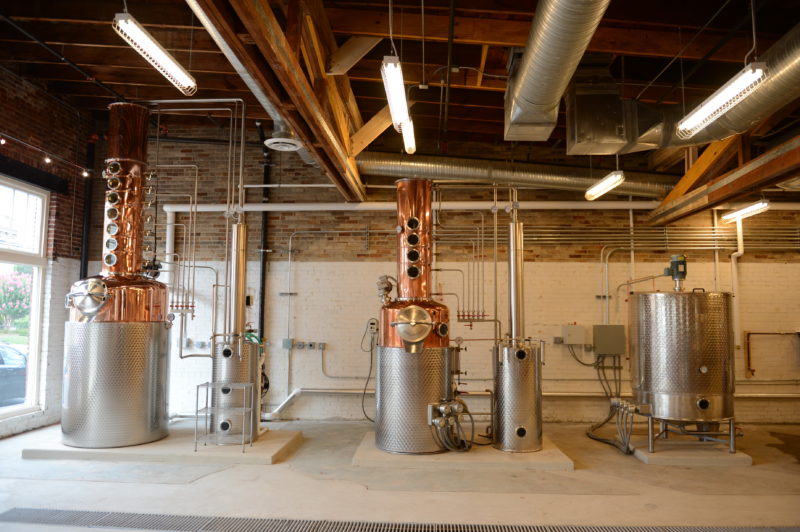 (Photo Credit to: Rick Martin)
(Photo Credit to: Rick Martin)
How does the geographic location and the weather affect the maturation process?
SH: Virginia has the benefit of wild swings in temperature. In the summer we get up to 100 deg F, and in the winter, often down to around 10-15 deg F. In the spring and fall, we get wild storms and ups-and-downs in temperature on a daily basis. Those swings may drive us crazy as people, but the whisky loves it. The various barometric pressures push and pull the whisky in and out of the wood staves like a sponge, getting great interaction with the barrel. It makes really fine whisky!
Are you using any special casks, – quarter casks, etc?
SH: Since the start, and for the foreseeable future, we use half-casks–30 gallon casks. We like the balance between a slightly higher ratio of wood to spirit, but also large enough to allow oxidization to occur, which simply takes time. Plus, a full cask weighs about 200 lbs, and we can still move it around by hand with two people. The larger casks are much heavier and more dangerous to handle.
Scott, lets switch gears a bit, and get personal. What was your first dram? How did you find yourself immersed in the whiskey world?
SH: My first dram was actually not whiskey, but a German liqueur called “Boonekamp” (pronounced “bone-eh-komp”). It is a “magenbitter” which is a drink similar to Jaegermeister. We used to drink it all the time after meals in Germany, since I was five years old. It’s a regular part of culinary life in the Rheinland Pfalz area where I grew up. As an adult, my first dram of whisky was Glenmorangie. I was instantly in love, and started exploring all the beauty of Scotch (and later Bourbon and Rye).
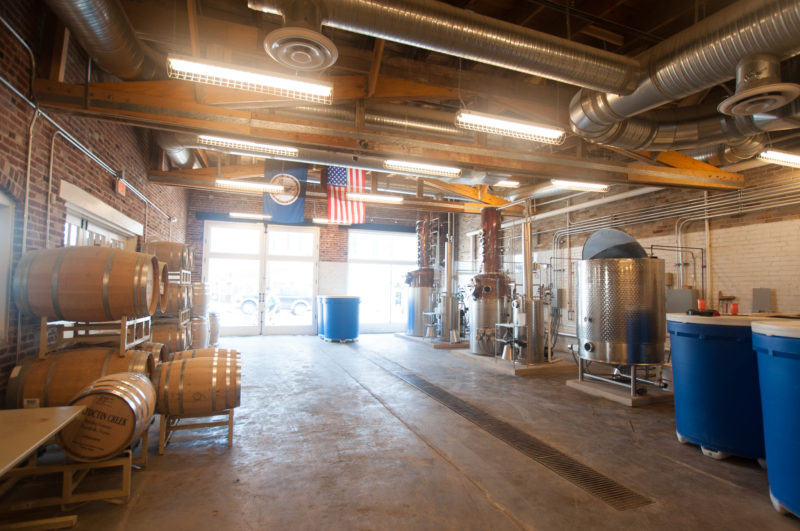 (Photo credit to: Kristen Dill)
(Photo credit to: Kristen Dill)
Are there any industry leaders in this space that you see as your role models?
SH: My friends John Little and John Foster, who started Smooth Ambler at the same time I did, have done an amazing job building their company, and they do an amazing job with branding and sales. I admire them a great deal. I also admire Paul Hletko, at FEW, but I’d never say so, because he’d be insufferable if he knew it.
Don’t worry Scott, we won’t tell Paul. On a final note, how do you think next year will go and what are your hopes?
SH: We are hoping to expand dramatically–a doubling–in 2017. We’re looking for new distributors in states we’re not currently in. It will be wonderful to get this gorgeous brown liquid we make into the hands of more and more people!





